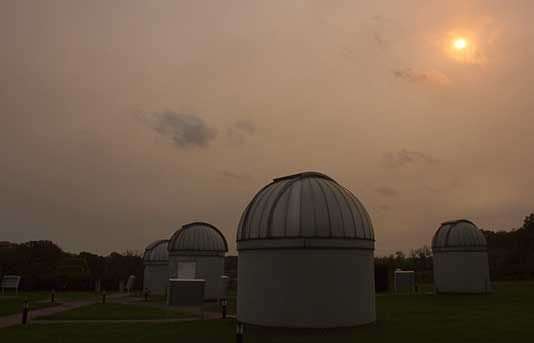Physicists track atmospheric particles producing Monday's red sky

Atmospheric physicists from the University of Hertfordshire have been tracking the atmospheric particles responsible for the stunning red sky and sun seen across parts of south-east England on Monday afternoon.
Using a Lidar, a laser ranging instrument, at the University's Bayfordbury Observatory near Hertford, the team monitored the height of the particles throughout the day. Laser pulses reflected from the particles show their arrival around midday, their growing height in the atmosphere, and their eventual departure in the evening.
The atmospheric profile was measured every second, allowing the changes in the particle layering to be observed throughout the day. The particles responsible for the red sky are seen as a diagonal stripe in the profile sequence. The layer of dust arrived over Hertford around 11:00 GMT at 1 km altitude, drifted past over the next 6 hours at progressively higher altitudes, and reached 2-3 km altitude by the time it moved away from Hertford around 18:00 UTC.
During the time the particles sat over England, the sky acquired a reddish hue and the sun appeared distinctly red, due to the preferential scattering of blue light by the particles (main image).
Professor Joseph Ulanowski of the University computed the likely path taken by the particles over the preceding six days, prior to their arrival over England, using the NOAA HYSPLIT trajectory model. These computations show that the air passed over both the Saharan desert and Portugal, picking up desert dust from the Algeria-Mauritania region of the Sahara and potentially also bushfire smoke from Portugal, which the air then carried over south-east England.
Dr Matthias Tesche, a meteorologist at the University of Hertfordshire, noted the role of tropical storm Ophelia in producing Monday's rare views of the sun and sky. "The presence of Ophelia in the region greatly affected the larger-scale circulation patterns and enabled it to tap into the reservoir of Saharan dust and lead it straight to the UK and Ireland," he said.
Atmospheric physicists at the University of Hertfordshire regularly monitor atmospheric particles and pollutants as part of their research into air quality, climate change and light scattering.
Provided by University of Hertfordshire




















